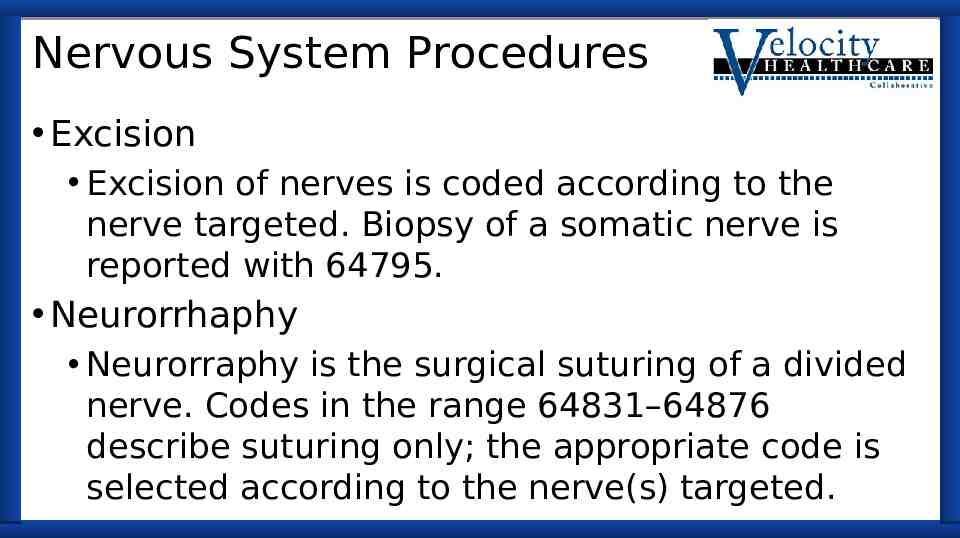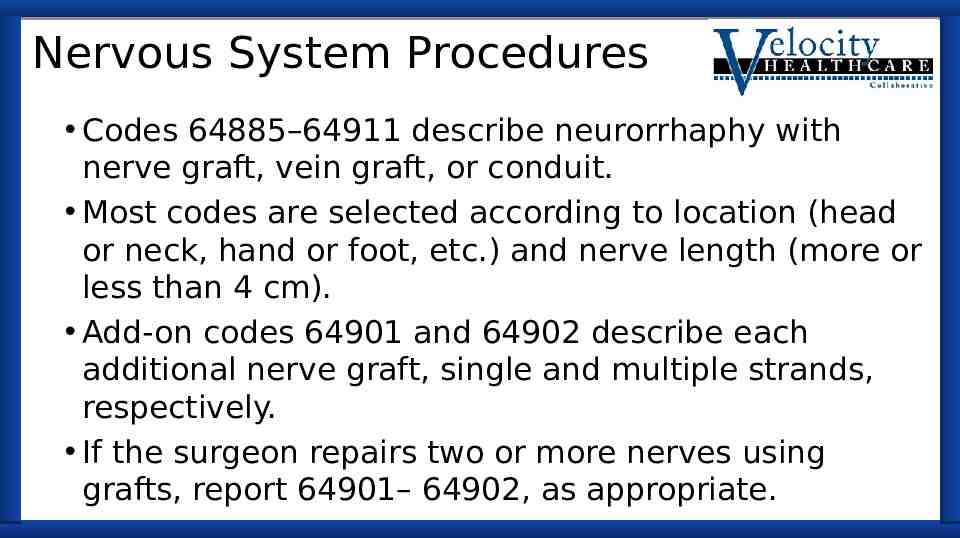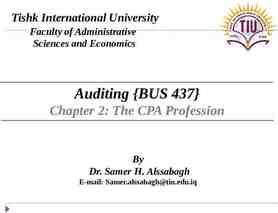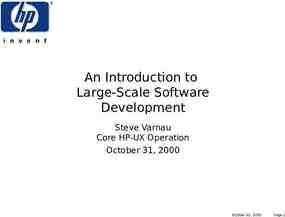Endocrine and Nervous Systems Lamon Willis
92 Slides4.01 MB
Endocrine and Nervous Systems Lamon Willis
Endocrine
Endocrine System - Anatomy Glands Secretory Excretory Hormones
Endocrine System - Anatomy Glands include: Thyroid Parathyroid Adrenal (medulla, cortex) Pituitary (anterior, posterior) Thymus Pineal Pancreas
Thyroid Gland Thyroid Lobes Isthmus T3 – triiodothyronine T4 – tetraiodothyronine or thyroxin(e) Calcitonin
Thyroid Gland Thyroid hormone Iodine TSH – thyroid stimulating hormone or thyrotropin (pituitary) Goiter Calcitonin
Thyroid Gland Hyperthyroidism Graves’ disease Hypothyroidism Myxedema Cretinism
Parathyroid Glands Parathyroid hormone (PTH) 4 small glands Calcium Hypocalcemia Hypercalcemia
Thymus Gland Fetus Puberty Involution Lymphocytes, T-lymphocytes or T cells Thymosins
Adrenal Gland Adrenal or suprarenal Medulla epinephrine, norepinephrine pheochromocytoma Cortex zona: glomerulosa, fasciculata, reticularis glucocorticoids, mineralocorticoids, sex steroids
Adrenal Cortex Steroid hormones Glucocorticoids – cortisol Mineralocorticoids – aldosterone Sex hormones – estrogen, androgen Addison’s disease Cushing’s syndrome
Pancreas Endocrine Insulin Glucagon Exocrine Digestive enzymes
Pituitary Gland (hypophysis) Anterior Pituitary Posterior Pituitary Growth hormone, GH TSH FSH Prolactin ACTH MSH Hypothalamus controls hormone secretion Oxytocin ADH – vasopressin or antidiuretic hormone diabetes insipidus
Pineal Gland Located above the cerebellum Deep in the brain Melatonin Biorhythm Sleep-wake cycle Maturation
Endocrine System Procedures 60000 Incision and drainage – one code: 60000 Excision: 60100-60281 Drain thyroid/tongue cyst 60100 Biopsy of thyroid 60200 Remove thyroid lesion 60210 Partial thyroid excision 60212 Partial thyroid excision 60220 Partial removal of thyroid 60225 Partial removal of thyroid 60240 Removal of thyroid 60252 Removal of thyroid 60260 Repeat thyroid surgery 60271 Removal of thyroid 60280 Remove thyroid duct lesion 60281 Remove thyroid duct
Endocrine System Procedures Thyroid biopsies performed by percutaneous core needle is reported with 60100. If a FNA (fine needle aspiration) is performed instead of a core needle, the service is reported with 10021 or 10022 not 60100.
Endocrine System Procedures Thyroid lobectomies are reported based on whether it is partial or complete. If a contralateral (opposite side) subtotal lobectomy is performed during a partial lobectomy, the service is reported with 60212. If a contra- lateral (opposite side) subtotal lobectomy is performed during a complete lobectomy, the service is reported with 60225.
Endocrine System Procedures A thyroidectomy is the removal of the entire thyroid. When this service is performed because of a malignancy, the code is selected based on whether a radial neck dissection is performed. A radial neck dissection will include removal of the thyroid, lymph nodes, and sometimes nerves, muscles, or veins.
Nervous System
Nervous System Neurons Cell body Dendrites Axons Myelin Synapses
Nervous System Neurotransmitters Glia, glial cells, neuroglia Astrocytes (astrocytoma) Dendrites Synapse Demyelination - MS
Nervous System Nerve plexus or plexi Cervical Lumbar Brachial Sacral Coccygeal
Nervous System Central Nervous System – CNS Brain Spinal cord
Nervous System Peripheral Nervous System Cranial nerves Spinal nerves
Disorders Alzheimer’s disease Progressive Parkinson’s disease Dopamine Multiple sclerosis – MS Epilepsy
Brain Cerebrum Corpus callosum Cerebellum Brainstem Midbrain Pons Medulla oblongata
Brain Cerebrum (cerebral cortex) Cerebral hemispheres Frontal Parietal Temporal occipital Basal ganglia
Brain Occipital lobe Cerebellum Brainstem Medulla Pons
Brain Ventricles Choroid plexus Cerebrospinal fluid - CSF
Brain Stroke Ischemic event Hemorrhagic stroke Aneurysm Transient Ischemic Attack -TIA
Spinal Cord Spinal nerves - motor and sensory fibers, dorsal and ventral roots Cervical – 8 Thoracic – 12 Lumbar – 5 Sacral – 5 Coccygeal - 1
Spinal Cord Spinal nerves Interspace Disc Nucleus pulposus Annulus fibrosis Cartilage endplates
Peripheral Nervous System Cranial Nerves I Olfactory II Optic III Oculomotor IV Trochlear V Trigeminal VI Abducens VII Facial VIII Vestibulocochlear IX Glossopharyngeal X Vagus XI Accessory XII Hypoglossal
Cranial Nerves (I-IV) Cranial nerve I – olfactory nerve Sense of smell; anosmia Cranial nerve II – optic nerve Vision Cranial nerve III – oculomotor nerve Cranial nerve IV - trochlear
Cranial Nerves (V) Cranial nerve V - trigeminal nerve 3 branches sensory ophthalmic motor – mastication Trigeminal neuralgia, tic douloureux neurodynia
Cranial Nerves (VI-VIII) Cranial nerve VI – abducens nerve motor nerve, controls eye movement Cranial nerve VII – facial nerve Facial expression Cranial nerve VIII – vestibulocochlear nerve Hearing and balance
Cranial Nerves (IX-XII) Cranial nerve IX – glossopharyngeal nerve Tongue sensation Cranial nerve X – vagus nerve Tongue, pharynx, larynx, chest & abdomen Cranial nerve XI – accessory nerve Cranial nerve XII – hypoglossal nerve Speaking, swallowing
Peripheral Nervous System (cont) Femoral Common fibular Intercostal Median Musculocutaneous Radial Saphenous Sciatic Subcostal Tibial Ulnar
Peripheral Nervous System (cont) Carpal tunnel syndrome Nerve entrapment Bell’s Palsy Mononeuritis Polyneuritis
Nervous System Procedures Skull, Meninges, and Brain Various methods may be used to pierce the skull and access the brain. These include: Twist drill holes for puncture (e.g., 61105–61108) and burr holes (e.g., 61120–61210). A trephine is a surgical instrument with a cylindrical blade, used to create an opening in the skull. The reason for access and location (for instance, for aspiration of hematoma or cyst, intracerebral) determine code selection.
Nervous System Procedures Craniectomy or craniotomy (61304–61576) is more extensive than twist drill holes or burr holes. A section of skull, or bone flap, is removed to access the brain underneath. If the bone flap is not replaced, the procedure is called a craniectomy. Code according to the reason for the procedure and its location.
Nervous System Procedures From the National Correct Coding Initiative (NCCI) edits manual: When this service (burr holes, twist holes, craniotomy, etc.) is integral to the performance of other services, CPT codes describing this service are not separately reportable if performed at the same patient encounter. A burr hole is separately reportable with another cranial procedure only if performed at a separate site unrelated to the other cranial procedure or at a separate patient encounter on the same date of service.”
Nervous System Procedures “In addition, taps, punctures, or burr holes accompanied by drainage procedures (e.g., hematoma, abscess, cyst, etc.) followed by other procedures are not separately reportable unless performed as staged procedures. Many intracranial procedures include bone grafts by CPT definition, and these grafts should not be reported separately.”
Nervous System Procedures CPT provides extensive notes for skull base surgery codes 61580–61619. These procedures are performed to treat lesions involving the skull base, and consist usually of three distinct parts: 1. Approach 2. Definitive Procedure 3. Secondary Repair
Nervous System Procedures Approach To find the appropriate skull-base surgery approach code, look to the surgeon’s documentation to determine the fossa targeted and whether the incision was through the dura. Confer with the surgeon to verify the exact structures he or she moved or removed to select the code that best describes the procedure. Note: Documentation in the medical record may not always match CPT code descriptor language.
Nervous System Procedures Definitive Procedure The definitive portion of the procedure is determined according to the area of the skull base (anterior, middle, or posterior cranial fossa) from which the surgeon performs the procedure. When coding for skull-base surgeries, the approach and definitive procedure codes should match. An anterior approach (such as 61586) should accompany a code describing, for instance, removal of a lesion in the same portion of the skull (the anterior cranial fossa). Other factors, such as whether the dura is entered, also will factor into code selection.
Nervous System Procedures Secondary Repair Often, the surgeon must perform a secondary repair following skull-base surgery. Report repair/ reconstruction codes (61618–61619) separately “if extensive dural grafting, cranioplasty, local or regional myocutaneous pedicle flaps or extensive skin grafts are required,” according to CPT guide lines. According to CPT, refer to the appropriate codes for primary closure, such as 15733, or a code from 15756– 15758
Nervous System Procedures Endovascular Therapy Endovascular treatment of arterial disease of the nervous system involves the use of balloons or stents to treat a diseased artery. Procedures described by 61623–61651 generally include selective catheterization of the target vessel only.
Nervous System Procedures Codes 61623-61651 report cerebral endovascular therapeutic interventions in intracranial arteries. For correct coding, you must know the vascular territories: right carotid circulation; left carotid circulation; and vertebro-basilar circulation. Codes 61623 and 61626 are the only OP procedures in for this code set.
Nervous System Procedures Surgery for Aneurysm, Arteriovenous (AV) Malformation, or Vascular Disease (inpatient) Codes 61680–61692 specify surgery of intracranial arteriovenous malformation. The malformation may be supratentorial (above the tentorium cerebella, or in the cerebrum), infratentorial (in the lower part of the brain or cerebellum), or dural (within the dura). These procedures may be coded as simple or complex, determined by accessibility and difficulty of repair.
Nervous System Procedures Aneurysm - a bulge or abnormal dilation caused by weakened blood vessel walls. Codes 61697–61703 describe repair of intracranial (within the skull) aneurysms. These repairs are classified as either simple or complex. According to CPT, a repair is complex when the aneurysm(s) is larger than 15 mm, involves calcification of the aneurysm neck (the constricted portion at the “base” of the aneurysm), incorporates normal vessels into the aneurysm neck, or requires temporary vessel occlusion, trapping, or cardiopulmonary bypass to complete the repair.
Nervous System Procedures The carotid circulation supplies blood to the anterior (front) and middle portions of the brain (via the carotid artery), and the vertebrobasilar circulation supplies the cerebellum and brain stem via vessels coming up the vertebral arteries. Code 61703 Surgery of intracranial aneurysm, cervical approach by application of occluding clamp to cervical carotid artery (Selverstone-Crutch-field type) describes a unique procedure involving an approach through the neck to occlude the carotid artery to control bleeding.
Nervous System Procedures The surgeon performs a craniotomy and locates the aneurysm. The ipsilateral carotid artery is then occluded while the surgeon occludes the aneu- rysm with a clip. Once bleeding is controlled, the carotid clamp is removed, the dura is closed, and the bone flap is repositioned and secured. The scalp and neck incisions are closed.
Nervous System Procedures Codes 61705–61710 describe other techniques or approaches for repairing intracranial vascular abnormalities: A combined approach through the neck and skull; the surgeon interrupts blood flow to the abnormality in both directions (61705) Intracranial electrothrombosis (cautery) to obliterate the lesion (61708)
Nervous System Procedures Intra-arterial embolization, injection procedure, or balloon catheter (61710) Code 61711 Anastomosis, arterial, extracranialintracranial (e.g., middle cerebral/cortical) arteries describes the joining of arteries to bypass an aneurysm or other defect.
Nervous System Procedures Cranial Stereotaxis and Stereotactic Radiosurgery CPT provides extensive explanation and instruction preceding stereotactic radiosurgery codes 61796–61800. These services are all provided in an inpatient setting.
Nervous System Procedures Cranial Neurostimulators Placement of intracranial neurostimulators is reported using 61850–61888. These procedures include access by burr hole, craniectomy, craniotomy, etc., and apply to any type of intracranial neurostimulator (simple or complex). Codes 61880-61888 are usually the only services provided in an outpatient setting.
Nervous System Procedures Repair Codes 62000–62148 describe repairs to the skull. The code descriptors are straightforward. Follow CPT parenthetical notes, when applicable, for proper code selection. Neuroendoscopy Codes 62160–62165 describe procedures performed by neuroendoscopy in an inpatient setting.
Nervous System Procedures Cerebrospinal Fluid (CSF) Shunt Standard surgical treatment for hydrocephalus (an accumulation of cerebrospinal fluid) includes placement of an extracranial shunt, or tube, to divert excess CSF from the ventricles of the brain to another body area (most often the abdominal cavity). The majority of the codes in this section apply to services provided in an inpatient setting.
Nervous System Procedures Injection, Drainage, or Aspiration CPT supplies extensive notes prior to this subsection, as well as numerous parenthetical instructions. Read and understand these guidelines prior to selecting a code. Highlights in this section include:
Nervous System Procedures During epidural lysis of spinal adhesions (Racz catheter procedure or epidural adhesiolysis), 62263–62264, the surgeon inserts a needle near the patient’s tailbone and threads a catheter through the needle to inject medication into adhesions. These codes include the injection of contrast and fluoroscopic guidance and localization.
Nervous System Procedures Code 62263 describes treatments spanning two or more days, and is only reported once for the entire series. Medicare considers this service an outpatient service though CPT description says “2 or more days.” Diagnostic spinal puncture (spinal tap) is reported with 62270; therapeutic procedure for drainage of CSF is reported with 62272.
Nervous System Procedures Report 62280 for all neurolytic injections or infusions to the subarachnoid space, regardless of the spinal level. For neurolytic injection or infusion into the epidural space, choose between 62281 and 62282.
Nervous System Procedures When myelography is performed on the cervical, thoracic, or lumbosacral regions utilizing a lumbar injection, codes 62302–62305 are reported based on the region under investigation and includes the injection of contrast into the cervical, thoracic or lumbar region of the spine and the radiological supervision and interpretation.
Nervous System Procedures When two or more regions are being evaluated, code 62305 is reported. For non-neurolytic substances (anesthetic, antispasmodic, opioid, steroid, etc.) administered through single injection or via a continuous infusion or intermittent bolus by indwelling catheter into the epidural or subarachnoid space, select a code from range 62310–62319, depending on the location. These codes include use of contrast material for localization or epidurography.
Nervous System Procedures For transforaminal epidural injection of a nonneurolytic substance, select from 64479–64484. For anesthetic injection of an anesthetic agent for autonomic nerves, see 64505–64530. For paravertebral facet (zygapophyseal) joint injections, report 64490–64495. Imaging guidance and localization are required for these procedures, and are inclusive components.
Nervous System Procedures If imaging is not used, report 20552–20553. If ultrasound guidance is used, report 0213T– 0218T.
Nervous System Procedures Catheter, Reservoir/Pump Implantation Procedures for “pain pumps” (for pain management or spasticity treatment) are reported with 62350–62370. Available codes distinguish between programmable and nonprogrammable pumps. CPT parenthetical instructions provide guidance on coding for associated procedures, such as refilling and maintenance of implantable infusion pump. Codes 62369 and 62370 report analysis with reprogramming and refill, without or requiring the skill of a physician or other qualified healthcare professional
Nervous System Procedures Laminotomy, Laminectomy Laminectomy (excision of lamina and spinous process) and laminotomy (partial excision of lamina) are performed primarily for nerve decompression. Read code descriptors carefully to determine if related procedures, such as facetectomy, foraminotomy, excision of herniated intervertebral discs, etc., are included.
Nervous System Procedures These procedures are grouped according to spinal region (cervical, thoracic, and lumbar). Some of these procedures are reported per segment (e.g., 63015–63017), while others are reported per interspace (e.g., 63020–63044). Generally, a single code is reported for the first segment or interspace, with add-on codes used to report additional segments or interspaces.
Nervous System Procedures Codes 63040–63044 specifically describe reexploration, or a repeat procedure. Follow CPT parenthetical instruction regarding proper reporting of bilateral procedures and allowable code combinations.
Nervous System Procedures Excision by laminectomy of lesion other than herniated disc is reported using 63250–63290, as appropriate to the type of lesion and its location. Add-on code 63295 describes reconstruction of dorsal spinal elements following an intraspinal procedure. CPT provides parenthetical notes outlining correct use of this code.
Nervous System Procedures Extradural Exploration/Decompression Exploration and Decompression codes 63055– 63103 are grouped according to approach, which also determines whether the procedure includes removal of bone (for instance, vertebral corpectomy). Read code descriptors carefully to determine if related procedures, such as osteophytectomy, etc., are included.
Nervous System Procedures Excision of Intraspinal Lesion, Anterior or Anterolateral Approach These codes (63300–63308) are selected according to spinal region (cervical, thoracic, lumbar), whether intra- or extradural, and (in some cases) by specific approach. These services are provided in an inpatient setting.
Nervous System Procedures Spinal Stereotaxis and Stereotactic Radiosurgery Stereotaxis may include: lesion creation (63600), stimulation not followed by other surgery (63610), and biopsy, aspiration, or excision of lesion (63615). CPT provides extensive explanation and instruction preceding 63620– 63621 for stereotactic radiosurgery.
Nervous System Procedures Spinal Neurostimulators Spinal cord stimulation delivers low voltage electrical stimulation to the dorsal columns of the spinal cord to block the sensation of pain. The systems consist of electrodes implanted along the spine, which are connected to a programmable pulse generator or receiver. The electrodes may be either a catheter electrode array, or arranged on a “paddle.”
Nervous System Procedures Implantation of electrodes is reported with 63650 or 63655, according to method. Two codes (63661, 63662) describe removal of spinal neurostimulator electrodes, according to type (electrode array or plate/paddles) and approach (percutaneous or via laminotomy/laminectomy). Two additional codes describe revision (63663, 63664) —including replacement when performed—of spinal neurostimulator electrodes according to approach. All of the above include fluoroscopy if performed.
Nervous System Procedures Implantation or replacement of pulse generator or receiver is reported 63685; revision or removal of the same is reported 63688. Programming may be reported separately.
Nervous System Procedures Extracranial Nerves, Peripheral Nerves, and Autonomic Nervous System This code section (64400–64495) applies to extracranial nerves only; for intracranial surgery on cranial nerves, see 61450, 61460, or 61790.
Nervous System Procedures Diagnostic or Therapeutic Nerve Block Nerve blocks are reported according to the nerve/plexus targeted. CPT provides extensive parenthetical notes in this section to guide code selection, and indicates when associated procedures (such as image guidance) may be reported separately.
Nervous System Procedures Transversus abdominis plane (TAP) blocks (64486– 64489) are reported based on whether the procedure was performed unilaterally or bilaterally and method of administration, either through injections or continuous infusions. Imaging guidance is included if performed. These services are performed in an inpatient setting.
Nervous System Procedures The term “facet joint injection” may describe either a nerve block or more extensive nerve destruction. When reporting nerve blocks (64490–64495), focus on the “joint”—the area between adjacent nerves—the provider targets; therefore, one nerve block “level” will involve two nerves. For example, if the physician provides diagnostic nerve blocks for C2, C3, and C4, he or she is
Nervous System Procedures For example, if the physician provides diagnostic nerve blocks for C2, C3, and C4, they are addressing three nerves but only two levels (the joint at C2–C3 and the joint at C3–C4). Be sure to apply 64490– 64495 per level, rather than per injection (the physician may provide more than one injection per level).
Nervous System Procedures Codes 64490–64495 include imaging guidance and describe unilateral procedures. If the provider addresses both the left and right side at the same level, CPT guidelines allow modifier 50 to report a bilateral procedure.
Nervous System Procedures Peripheral Neurostimulators Placement and revision/replacement of peripheral nerve neurostimulators (simple or complex) are reported using 64550–64595, depending on the nerve targeted and type of neurostimulator.
Nervous System Procedures Destruction by Neurolytic Agent Neurolytic agents for nerve destruction may include chemical, thermal, electrical, or radiofrequency methods. Codes in this range (64600–64681) are specific as to the nerve(s)/plexus, muscle(s), or glands targeted.
Nervous System Procedures When coding for nerve destruction, count the facet joints treated by the destruction of nerves. For codes 64633–64636, one facet joint may mean multiple nerves. Multiple injections in the same facet joint count as a single facet joint. Nerve destruction codes, like nerve block codes, describe unilateral procedures; report bilateral procedures using modifier 50 or modifiers LT and RT, as appropriate.
Nervous System Procedures The use of fluoroscopic guidance for needle placement with either nerve block or nerve destruction procedures is considered inclusive. Note that paravertebral facet joint injections (64490–64495) include image guidance (fluoroscopy or CT). If imaging is not used, report 20550–20553. If ultrasound guidance is used, report 0213T– 0218T.
Nervous System Procedures Neuroplasty Neuroplasty (64702–64727) describes decompression and freeing of intact nerve(s) from scar tissue. The codes are applied according to the nerve targeted.
Nervous System Procedures Transection and Avulsion Codes for transection (to divide by transverse incision) and avulsion (tearing away) of nerves codes are selected according to the nerve targeted. CPT parenthetical notes provide guidance for proper reporting of bilateral procedures.
Nervous System Procedures Excision Excision of nerves is coded according to the nerve targeted. Biopsy of a somatic nerve is reported with 64795. Neurorrhaphy Neurorraphy is the surgical suturing of a divided nerve. Codes in the range 64831–64876 describe suturing only; the appropriate code is selected according to the nerve(s) targeted.
Nervous System Procedures Codes 64885–64911 describe neurorrhaphy with nerve graft, vein graft, or conduit. Most codes are selected according to location (head or neck, hand or foot, etc.) and nerve length (more or less than 4 cm). Add-on codes 64901 and 64902 describe each additional nerve graft, single and multiple strands, respectively. If the surgeon repairs two or more nerves using grafts, report 64901– 64902, as appropriate.

































































































